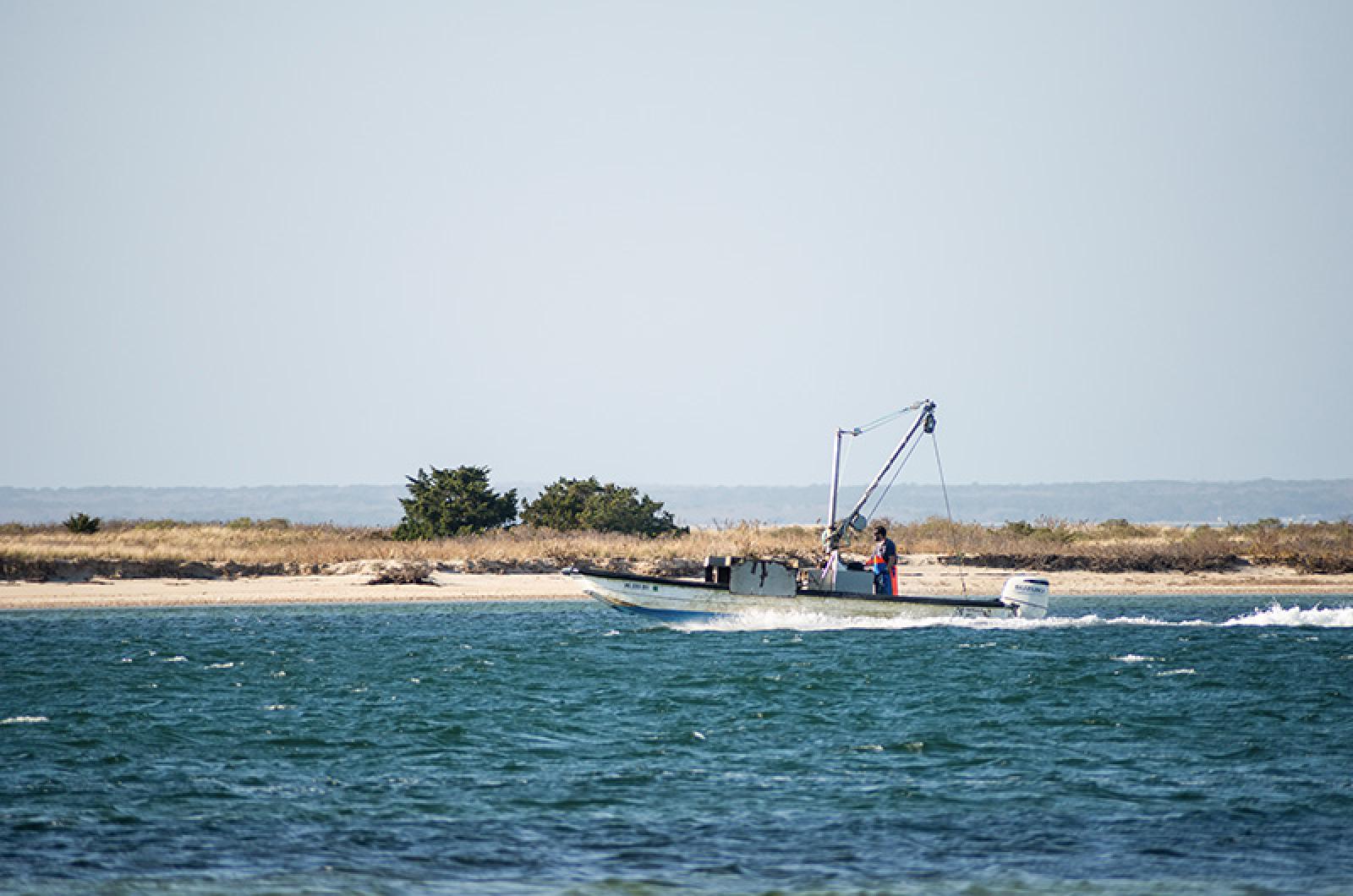After a banner year for Vineyard commercial scallopers in the 2022-23 season, this winter’s bay scallop season was something of a cool-down for the notoriously fickle fishery.
Island fishermen harvested around 2,500 fewer bushels this year, though local scallopers and fishmongers say it wasn’t all bad news for the fishery, as a lower harvest on- and off-Island prevented the precipitous drop in scallop prices that occurred last year.
“It was good this year,” said Matteus Scheffer, who drags from the Anita Penny out of Cape Pogue. “This year, we were all getting our [daily bushel] limits pretty well, for the most part.”
Edgartown shellfish constable Rob Morrison described the harvest as “not bad by modern standards.”
“Scallops are one of those things where their abundance does seem to be cyclical,” he added.
Though scallops were once prolific across the Island, nearly all of the harvest nowadays comes from Cape Pogue, Mr. Morrison said, with the fishery supporting around 30 Edgartown scallopers in recent years.
“There’s no doubt that there’s a major decline in bay scallops coastwide,” he said, pointing to declining water quality. “It does seem like a Cape Pogue and Nantucket, from my understanding, are the last ones that have consistent scallop production.”
Other traditional scalloping fisheries on Long Island and Cape Cod are intermittent at best, though an unusually abundant scallop harvest off Wellfleet last year and a strong Vineyard take combined to drive down the price in 2023.
“The price mostly has to do with what other areas have scallops,” said Tyler Gibson, owner of the Fish House and seafood wholesaler. Last year, he said, the fishermen were getting $28 per pound at the start of the season and just $15 by the end — the lowest price in recent memory.
This year, however, without a major Cape harvest and with a more manageable take on-Island, the price hovered around $22 per pound for most of the season before dropping to $20 towards the end.
“It was much better. More stable is the right word,” said Mike Holtham, manager of the Net Result, which sells scallops retail and wholesale. “It was a successful season. The market supported the availability.”
On-Island demand was steady this year, Mr. Holtham added, allowing him to sell much of his stock locally, while also storing some for sale this summer. When he did dip into the off-Island market, Mr. Holtham said he was always able to find a buyer.
“I didn’t end up having any days where I had an exorbitant amount, a glut catch, that I was struggling to get rid of,” he said.
Mr. Gibson said their was ample demand all season. “I could have used 10 times what I was getting. I had people calling every single day for stuff. I had to spread stuff around just to keep people happy.”
Most Island bay scallops are sold wholesale in Boston, Mr. Gibson said, where they directly compete with the intermittent Cape harvest, before ultimately ending up in New York.
Nantucket’s location further out in the water means it can be more cost effective for them to fly their harvest directly to New York, resulting in a smaller impact on Vineyard prices, Mr. Gibson said.
The Nantucket fishery brought in about than 8,700 bushels this year, up from 7,329 bushels last year, according to the Nantucket Current.
But while Edgartown fishermen were able to cash in on a relatively strong harvest, Chilmark shellfish constable Isaiah Scheffer (Matteus Scheffer’s father) said the up-Island season was much less successful.
“Overall, the scallop size was pretty small and the numbers weren’t great,” the constable said. “Only three people went commercially.”
Last year, the harvest from Menemsha Pond hit an all-time low at just 12 bushels.
Mr. Scheffer said any number of factors could have contributed to the disappointing harvest in Chilmark, adding that recent laboratory tests indicating that the scallop parasite Coccidia, harmless to humans but deadly to the shellfish, is pervasive in town waters.
Despite those tests, though, he said it was too early to tell if the disease was causing a die-off similar to the Peconic Bay fishery on Long Island.
“Overall, I would just say, it just wasn’t a great year for Chilmark, but next year, it looks better,” he said.
Edgartown fishermen and shellfish officials are also hopeful for next year, observing a prolific seed set this season, with potential to bring in a big harvest next year.
“I understand a lot of the old-timers said they’ve never seen this much seed in Cape Pogue before,” Matteus Scheffer said. “I saw a lot of seed, for sure.”
And despite ongoing volatility in the market and the harvest, Mr. Morrison said he is confident that the scallopers will continue to persist, at least for now.
“It’s nothing like it used to be, but you know, it’s good to see that there’s still these people that can hang on to something that’s been a tradition for a long, long time,” he said.







Comments (3)
Comments
Comment policy »